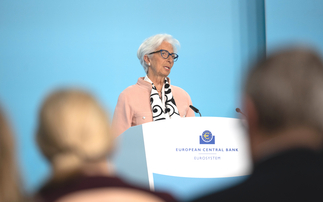Nick Gartside, J.P. Morgan Asset Manegement's global fixed income CIO, explains why he expects any further sell-off in fixed income to be more muted, after the cost of shorting government debt jumped.
Global central bankers should be congratulated for engineering what we would call ‘the great escape of 2013.’ As the dominant influence in the investment landscape last year, they held down bond yields while accumulating massive amounts of assets.
They were successful in wielding forward rate guidance as a powerful policy tool. The result was that long-dated bond yields repriced last year (in industry jargon, this means the yield curve steepened) while short-dated bond yields remained low.
The impact of this success – and the reason why 2013 was the great escape – was that the losses investors experienced on bonds were relatively muted overall. Credit goes to the policymakers for engineering a rise in bond yields with minimal economic fallout.
2013 was also something of a proof statement for global unconstrained fixed income investing. Whereas a traditional fixed income investor suffered manageable losses from bond indices, global unconstrained strategies showed ability to deliver positive absolute returns even as fixed income was repricing.
Now with global liquidity plentiful and economic growth improving, the central bank reaction function will inevitably have to evolve. Therein lies the interesting question for investors. Just what can we expect to see?
A key word to remember is ‘trend growth.’ When we look at the leading economic indicators, we see that growth relative to historical trends is running below its average. Normally you get a V-shaped economic recovery after a major recession, although this has been anything but that. Half a decade into what has been enormously aggressive monetary easing, growth expectations are still decidedly modest.
The other consideration is low and subdued inflation. The UK, for the first time in four years, achieved its 2% target recently. Wage inflation is still very low. Corporate earnings continue to show productivity gains at the cost of squeezing labour costs.
All this means that central banks will remain on the front foot for stimulating continued economic recovery. If we think of the typical enemies of a bond investor – higher rates and inflation – it is likely those factors both remain benign thanks largely to policymakers.
So what is in store for bond investors?
We think yields continue to drift higher, but largely remain in the downward pattern established over the last 30 years. Meanwhile, because this steepening of the yield curve we have experienced makes it expensive for investors to be short government bonds, that is technical support for the market. It means any sell-off we experience in the year ahead is unlikely to be as dramatic as those last year.
Since we expect to see trend growth continue, our focus is on yield and carry and on eliminating sensitivity to rate movements.
In terms of what we are buying, we continue to like corporate investment grade debt where, although spreads have tightened, there continues to be security specific opportunities.
We favour bonds further down the capital structure in terms of bank debt, but only those which meet specific criteria. We continue to like high yield debt, where we think investors are being well compensated for taking risks.
We are favouring the securitised market, such as short-dated bonds related to the US housing market.
An interesting aspect for 2014 will be how investors treat the emerging market debt space. At the moment we have a very low allocation to EMD, but over the course of the year we think there will be buying opportunities.
There will be a time to buy emerging market debt, but we are probably not there yet.
Nick Gartside, global fixed income chief investment officer, J.P. Morgan













